Cinema creates a loop that preserves memory, and through the artful use of music and unexpected juxtaposition, Davies communicates the intensity that belongs to those memories. The re-enactments of Children are transcended. Death And Transfiguration is a powerful and deeply moving experience for the audience as well as for its creator. Robert dies in a crescendo of rasping, heaving rattling breaths, and as death comes, the last memories bubble up; of mother and son walking hand in hand, of two seagulls a-wing over the Liverpool skyline. And for all the Catholic indoctrination, this is a godless death. Redemption lies in cinema.
Matthew De Abaitua
Terence Davies’s Liverpool trilogy comprises three short films: Children (1976), Madonna and Child (1980) and Death and Transfiguration (1983). The most autobiographical of his works, they chart the life of Davies’s alter ego, Robert Tucker, from unhappy childhood through to sexually-repressed adulthood. In the final triptych Davies imagines an elderly Tucker looking back on his life as he lies in bed facing a lonely death. This was the kind of old age and demise that Davies believed would have been his had he not broken away from that particular trajectory in his late twenties.
The image of the child is central to Davies’s view of life; inside we are all still children. The first film in the trilogy, Children opens with a soundtrack of schoolboys at play and slow, tracking close-ups framing the faces of Robbie and the three older boys who are tormenting him for being effeminate: “Who’s a fruit then, eh? It’s Al Capone isn’t it, eh? Your name’s Al Capone, isn’t it?”
In Davies’s world though, these are not just children, not simple beings who have yet to become fully-formed. Each, Davies implies, is a complex individual with a rich inner life. Thus, the child does not grow up and become a man, or a woman, in the sense of being transformed into another being; the adult is still, underneath it all, the same child he or she once was. We are all, in that sense, still the child we once were.
Terence Davies, the youngest of ten children, was born into a working-class Catholic family in Liverpool. His father was a violent bully, driving the young Davies even closer to his loving but down-trodden mother. His father died when Davies was seven, but cast a shadow over the rest of his life.
Davies realised he was gay when quite young and suffered terrible feelings of guilt and confusion because of the dissonance of his sexuality and his faith. The themes of Catholic guilt, repression, bullying and loneliness are integral to all three films. But underlying everything, as was the case for Davies himself, is Robert Tucker’s unwavering devotion to his mother.
Terence Davies’s Liverpool trilogy is an exercise in memory. But memory, Davies insists, is episodic, a kaleidoscope of images which do not follow a conventional narrative arc. We are shown the world through the eyes of Tucker, but Robbie’s Liverpool is not an objective reality, it is a projection of his memory. And as is the case with memory, feelings and moods are just as important as narrative. Narrative, after all, is very fluid: each of us constantly constructs and revises the story we tell about ourselves.
Although the films are set in Liverpool, we see very little of the city. Robbie’s is essentially an interior world: home, school, office, church, hospital. Looking at Davies’s work as a whole, there seems to be an association of interior space with the female: safe, warm, comforting. Exterior space he seems to personify as male, and thereby harsh and threatening.
All the dynamism of Liverpool in this period, the maritime links with America and the joyous musical and artistic creativity, are absent from the trilogy. Or, more correctly, they do not feature in Robbie’s life. Snatches of people happily singing and laughing are there in the films, but always at the periphery, rarely directly involving Robbie.
But Davies does use music in his films, often to very powerful effect. Chamber music, folk songs, children’s hymns and songs from Hollywood musicals are used sparingly but to haunting effect, an aural seasoning to the stew of visual images. The choice of music is never obvious, which sometimes produces breath-taking juxtapositions. In the opening of Death and Transfiguration, for instance, the last film in the trilogy, the middle-aged Robbie travels to his mother’s funeral, alone in the back of the funeral car, overlaid with the strains of Doris Day’s It All Depends On You.
Children, Madonna and Child and Death and Transfiguration move relentlessly through the three stages of Robbie’s life. But Davies consciously breaks the rules of linear time as he moves backwards and forwards exploring the jumble of Robbie’s memories, his youth, adulthood and old age. Davies does not want us to just look at Robbie’s life, he requires us to witness it, and present each fragment as if part of a body of evidence.
Although at one level we know that these are films set in the Liverpool of the 1970s and 1980s, because that it when they were made, the trilogy is essentially set in a perpetual present. We all live our lives in that way, never questioning what we mean by ‘now’. And yet the past is always present and, through memory, we re-enact it again and again.
In one of the most ineffably moving scenes in Children, the 11-year old Robbie and his mother make a journey through Liverpool by bus. In one’s memory the scenes one plays out operate from just one point of view. And so it is with this journey, the camera, still and unblinking, observes Robbie and his mother from one side as they sit, mother looking ahead and Robbie writing in the mist of his breath on the window.
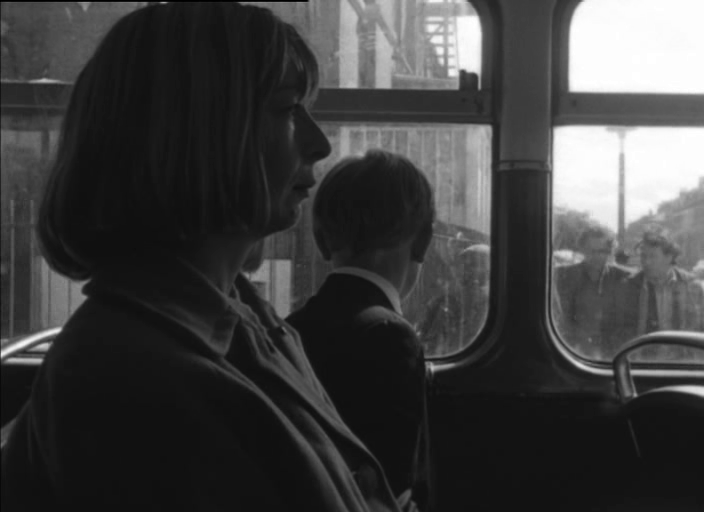 Courageously, Davies holds this shot for a full two minutes. There is no dialogue and no sound, other than a haunting oboe lament. Then he switches the angle and we are face on to the mother and child. The sound clicks in, first the labouring engine of the bus and then a sob, and we realise that Robbie’s mother is crying. She continues to look ahead as the tears stream down her cheeks. Robbie looks at her, confusion and fear in his face, but neither of them says anything. The scene switches to Robbie in his early twenties getting off a bus, alone but burdened with his memories.
Courageously, Davies holds this shot for a full two minutes. There is no dialogue and no sound, other than a haunting oboe lament. Then he switches the angle and we are face on to the mother and child. The sound clicks in, first the labouring engine of the bus and then a sob, and we realise that Robbie’s mother is crying. She continues to look ahead as the tears stream down her cheeks. Robbie looks at her, confusion and fear in his face, but neither of them says anything. The scene switches to Robbie in his early twenties getting off a bus, alone but burdened with his memories.
Davies offers no explanation of the scene on the bus. How could there be an explanation? This is a childhood memory and so many of those memories, things one is too young to understand at the time, remain locked in mystery forever. Mam cried, and that is all Robbie remembers. It is all he needs to remember.
In Madonna and Child we find a middle-aged Robbie living at home with his mother; his father died many years before and the mother and son live quietly together, each providing the other with companionship and support. By day he crosses the Mersey and keeps the books in a stultifying shipping agent’s office, just as Davies did for twelve years before he went away to drama school.
By night, Mam safely in bed, Robbie creeps out to find something he hopes will fill his void of loneliness and frustrated desire. He seeks casual sex with rough, hairy men, just like those in his collection of pictures of wrestlers. One is left with the thought that these are men who bear an uncomfortable resemblance to his late father.
There is no joy in Robbie’s sexuality; just pain, humiliation and an overwhelming sense of guilt. A guilt that he carries with him to the confessional box, but even there it is something he cannot face, sublimating it instead for a meticulously kept log of other more acceptable sins.
By the time we reach Death and Transfiguration Robbie’s mother is long-dead and he is an old man alone and dying in his hospital bed. Memories bubble up and burst in his mind throwing out aoristic juxtapositions: the nurses decorating a Christmas tree in Robbie’s ward become the nuns at his primary school nativity play and the fire consuming his mother’s coffin summons up a cheery blaze in the grate from a childhood Christmas.
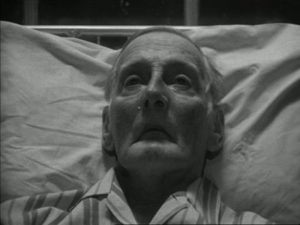 Wilfrid Brambell, in his last film role before his own death, gives an outstanding performance as the elderly Robert Tucker. In a hospital bed, unable to move or speak because of a stroke, his cadaverous face and sunken eyes seem to carry the whole story of a wasted life.
Wilfrid Brambell, in his last film role before his own death, gives an outstanding performance as the elderly Robert Tucker. In a hospital bed, unable to move or speak because of a stroke, his cadaverous face and sunken eyes seem to carry the whole story of a wasted life.
 Davies clearly loves faces: in one scene he lights Terry O’Sullivan, playing the middle-aged Robbie, from below and in close-up to give his face an alarming resemblance to Edvard Munch’s The Scream. Valerie Lilley, painfully sublime as the young Robbie’s mother, might have been chosen just for her face, which seems to carry the beauty of her youth at the same time as the tribulations of her married life.
Davies clearly loves faces: in one scene he lights Terry O’Sullivan, playing the middle-aged Robbie, from below and in close-up to give his face an alarming resemblance to Edvard Munch’s The Scream. Valerie Lilley, painfully sublime as the young Robbie’s mother, might have been chosen just for her face, which seems to carry the beauty of her youth at the same time as the tribulations of her married life.
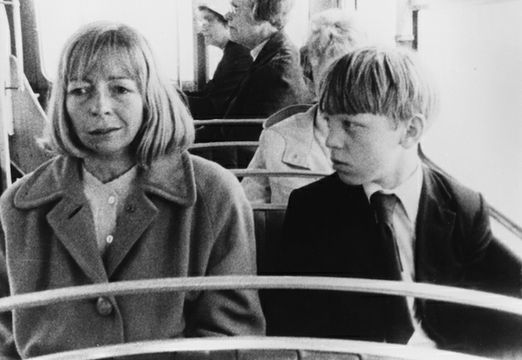 The whole trilogy is about looking back: in Children Robbie Tucker, now in his early twenties, is tortured by memories of his childhood, in Madonna and Child it is the middle-aged Tucker who looks back to his earlier years, while in Death and Transfiguration an elderly Robert Tucker surveys his whole life.
The whole trilogy is about looking back: in Children Robbie Tucker, now in his early twenties, is tortured by memories of his childhood, in Madonna and Child it is the middle-aged Tucker who looks back to his earlier years, while in Death and Transfiguration an elderly Robert Tucker surveys his whole life.
Davies breaks a number of cinematic conventions in the way he portrays Robbie’s life. It is likely he would have been taught at film school to avoid empty space and dead time on the screen; such errors are said to interrupt the narrative flow and risk losing the audience’s attention. In the trilogy, and indeed in his later Liverpool films, Davies ignores this advice; he presents sustained shots of characters saying and doing nothing and even shots with no characters present at all. This is life and not a performance, he seems to be saying, there is a world beyond the frame and these characters will continue to live their lives when the camera is not rolling.
Because of the restrictions of his budget, Davies had to shoot his trilogy in 16mm black and white. Children was made before he went to film school and Madonna and Child was his graduation piece. Yet Davies’s vision seems to supersede the technical limits of his medium and his lack of experience as a director. He seems to coax the monochrome film to the point where it shimmers with the haze of memory. He makes the maximum use of natural lighting too; many of his indoor shots are lit just by windows.
We have been conditioned to associate black and white film with the forties, fifties and sixties. Thus, for those of us who were children during that time, our childhood memories have taken on monochrome tones. For Davies, having to use black and white film, albeit for financial reasons, produced the happy accident of his trilogy seeming to exist outside of time; he makes no attempt to create period settings. The effect is a remembered life in a perpetual present.
The trilogy ranges back and forth through time but, whatever stage of Robert Tucker’s life we are asked by Davies to bear witness to and whichever of the four actors playing him is on screen, he is still the child we first saw in the opening scene of Children. Davies eventually lost his Catholic faith, but he still seems to share the Jesuit conviction that the first few years of a child’s life, the early influences and experiences that affect him or her, will determine the course of the rest of that life.
The young Robbie Tucker is cowed into passivity by an abusive father, brutal teachers and bullying school-mates. His ability to function, to express emotion, is locked into petrification from an early age by the shame of his sexuality; homosexuality was not just forbidden by the Church when Robbie was young, but by the law.
The quiet passivity we see from Robbie as a child when spoken to by his teachers we see again and again throughout his life: with doctors, priests and other authority figures. He even walks meekly away when refused entry to a gay club, as if accepting that he does not belong even there.
Through the course of the three films we see no friendships in Robbie’s life. Any sexual encounters he has are completely without any tenderness. The only love in his life, the thread that runs through all three films, is his love for his mother. He loves her to the end with childlike faith and sincerity.
In the final part of the trilogy, as Robbie lies in his hospital bed rasping out his last breath, the torch of the patrolling night-nurse playing on his face, the film closes with the voiced-over words:
When the light goes out, God is dead.
Davies was to return to some of the themes covered in his Robert Tucker trilogy in his later Liverpool films Distant Voices, Still Lives (1988) and Of Time and the City (2008). Distant Voices, Still Lives is another exercise in ‘memory realism’ and continues to mine Davies’s Liverpudlian working-class Catholic background.
Though this is a return to some of the same ground covered in the trilogy, Davies now opens up the story. Memories are played out before us once more, but this time they are the memories of an extended family of characters, not just Davies’s alter ego. Each memory is, seemingly, picked up and dealt out at random, as if from a hand of cards.
Twenty years later, now a critically-respected writer and director, Davies returned his creative attention to the city of his birth. Of Time and the City uses archive footage from the fifties and sixties with a voice-over by Davies.
But this is not the tourist-trail Liverpool of football, Cavern Club, Tate Liverpool and Albert Dock. Davies selects footage to reflect his own reminiscences of Liverpool in that period; memories of a city of dirt, poverty and brutally enforced ideas of gender roles and sexuality. Rather like Eliot’s Four Quartets, from which he quotes liberally, Davies transcends a mere documentary study of a particular place and time into a series of ponderings on the very nature of time, place and memory.
This is a revised version of an essay by Bobby Seal first published in issue 3 of gorse in March 2015. gorse is a print journal published in Dublin, featuring longform narrative essays, original fiction, poetry and interviews. All images used to illustrate this review remain the property of the film-maker and are reproduced with grateful thanks.

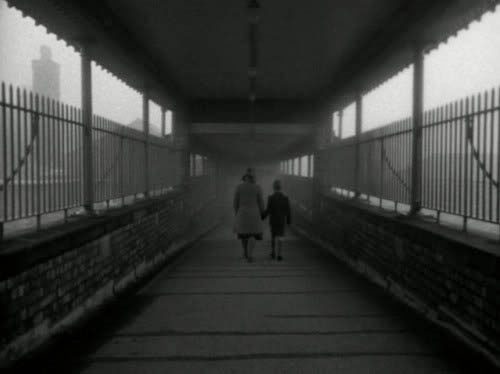
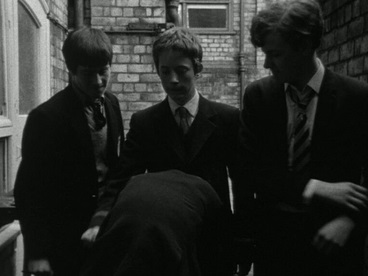
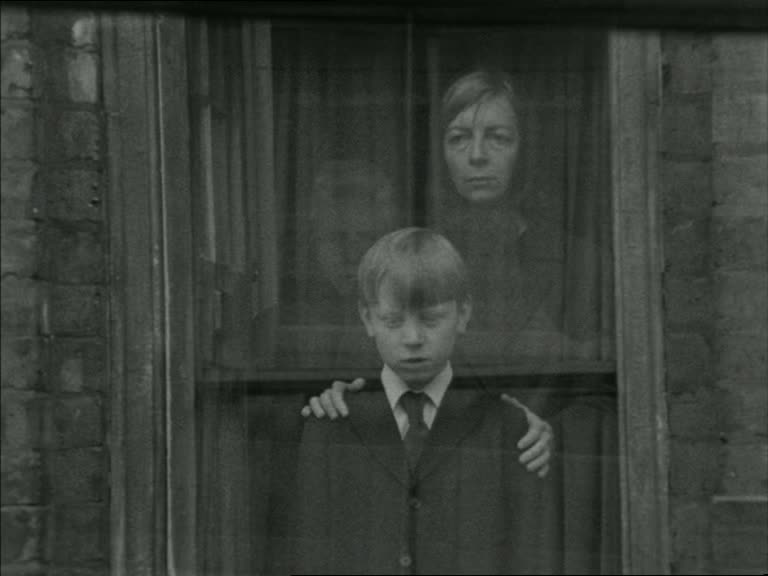
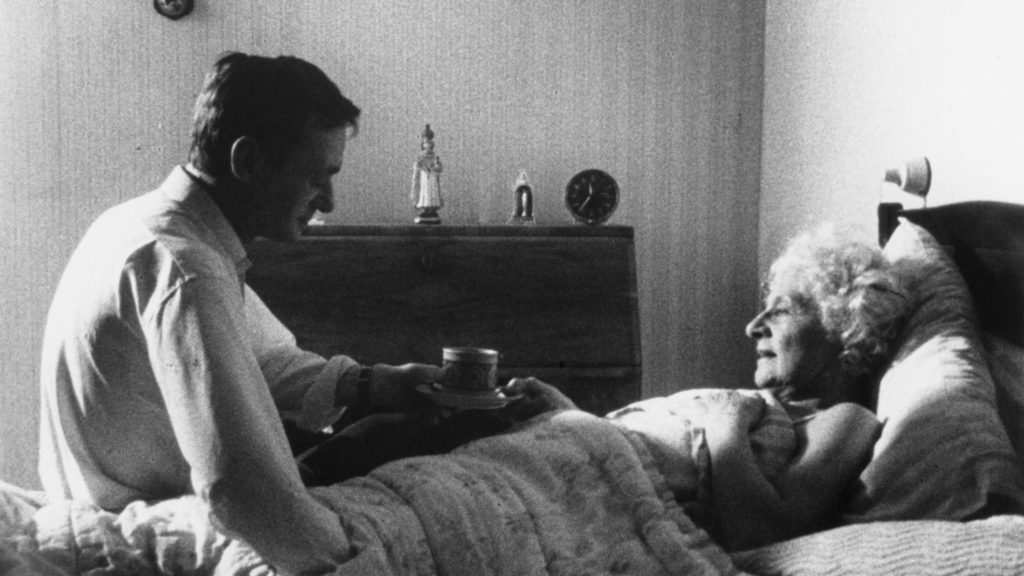
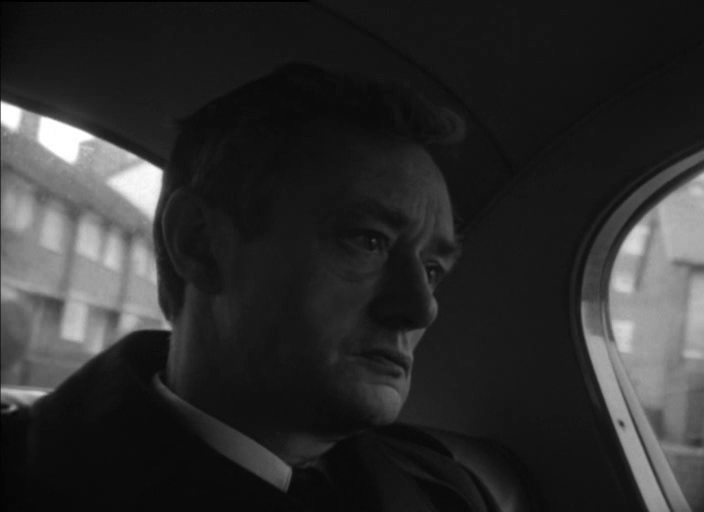
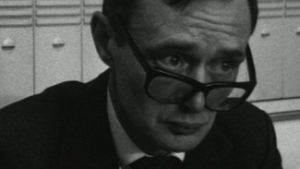
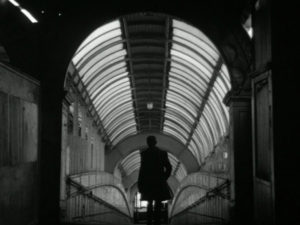
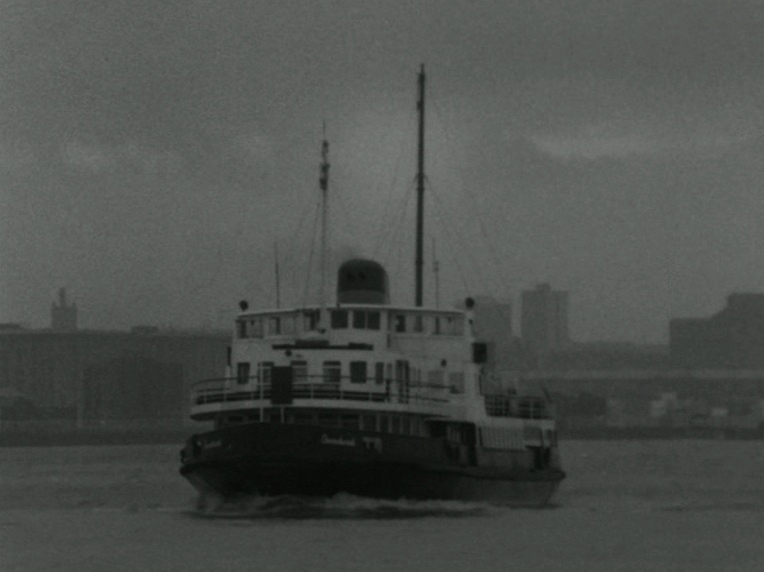
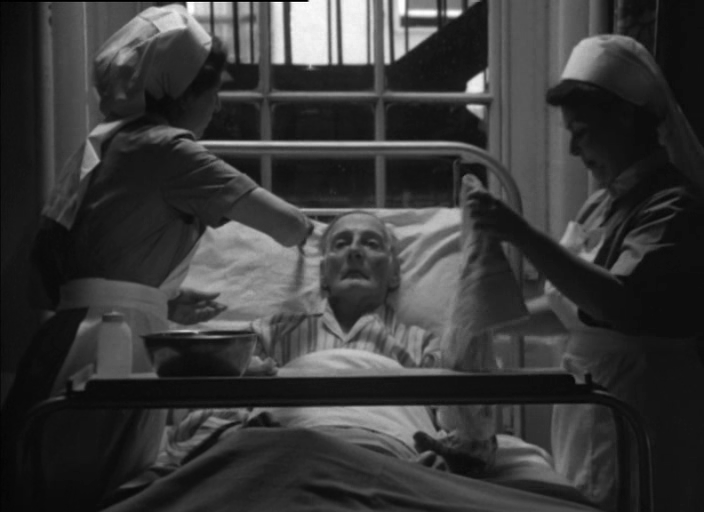
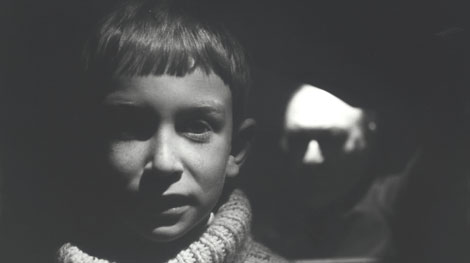
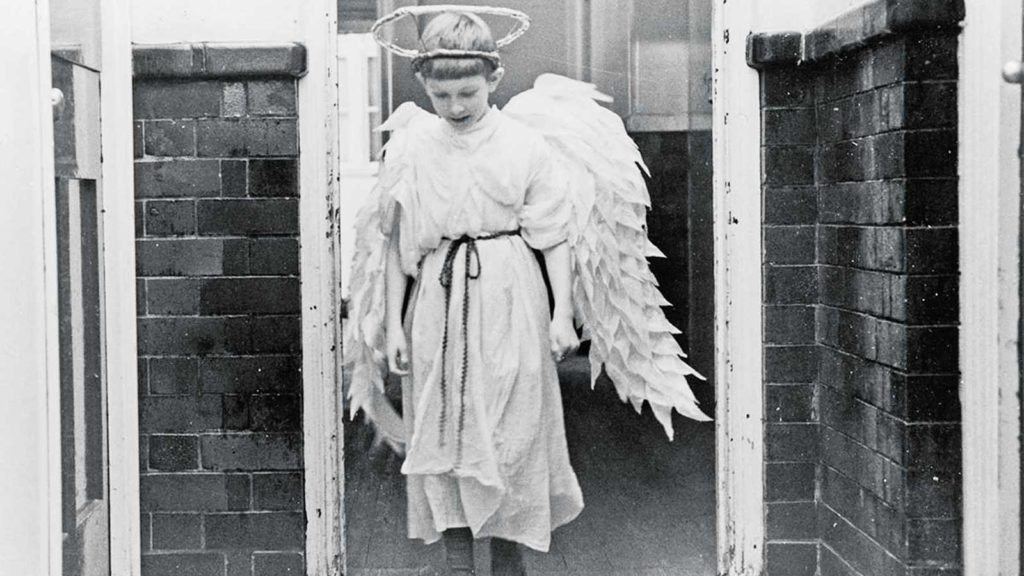
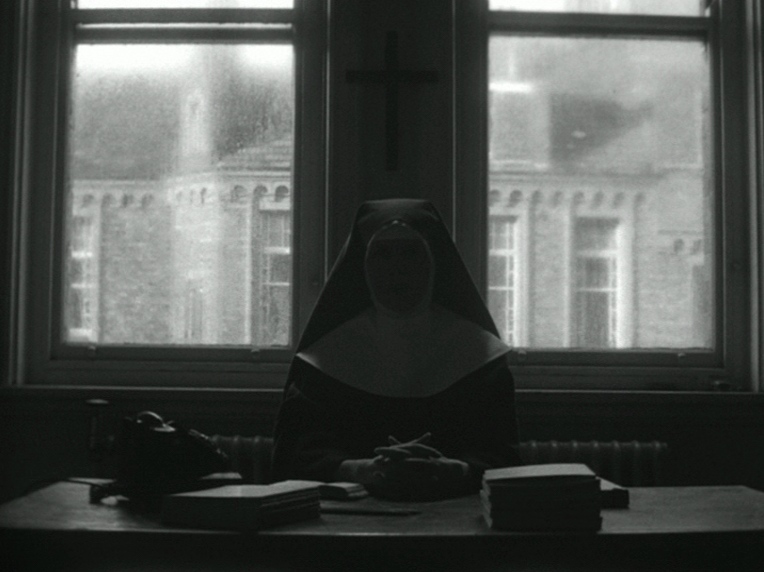
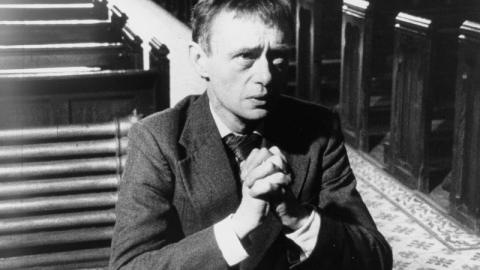
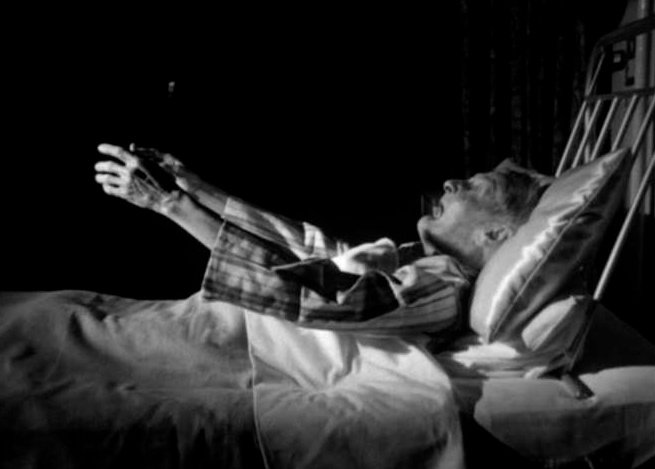
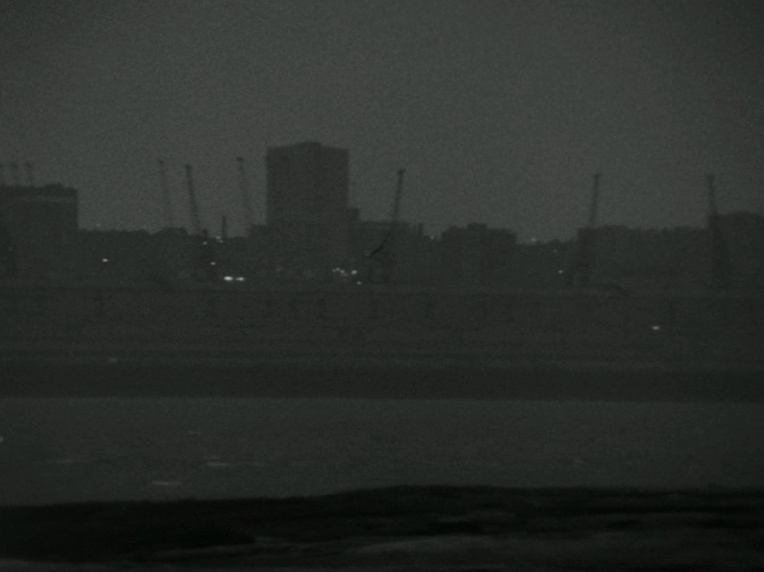

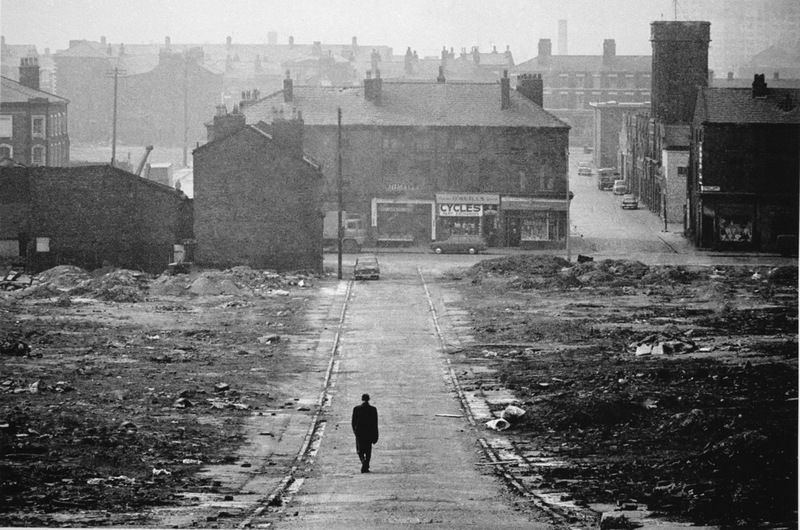
“By day he crosses the Mersey and keeps the books in a stultifying shipping agent’s office”
As a shipping agent’s office would be in the City of Liverpool, surely that means that the Tucker family had relocated to the other side of the water viz Birkenhead or Wallasey, and related non-work scenes after taking the ferry back across the water would therefore take place there.
Does he then die in a hospital not in Liverpool but in Birkenhead or Wallasey?